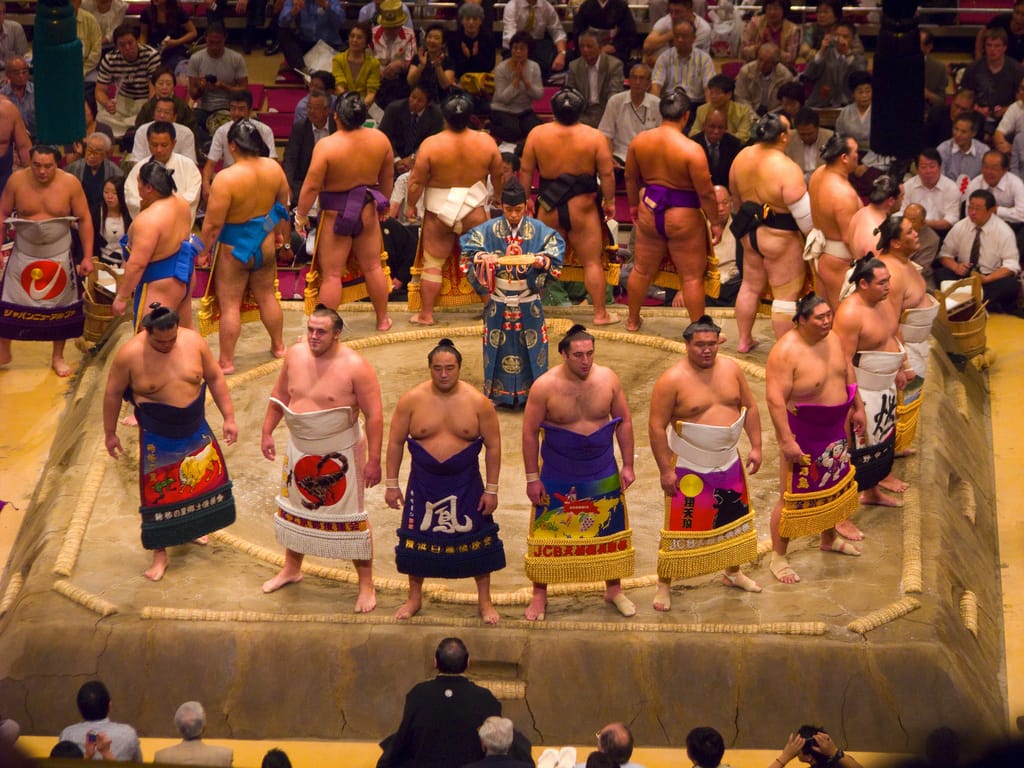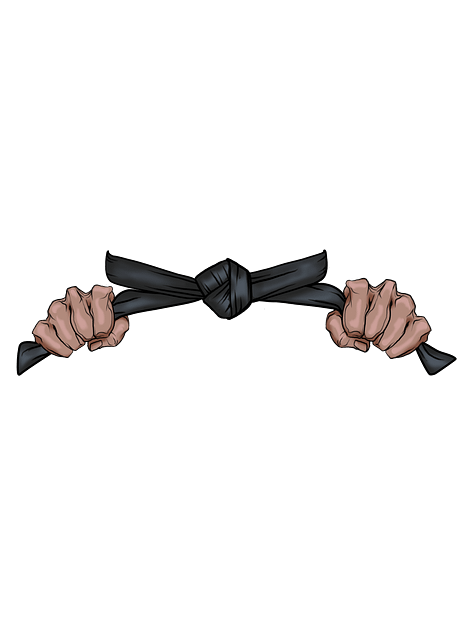As always, I’ll start with the basics. What is wrestling? Well, wrestling is a sport practiced in various styles by two competitors, involving forcing an opponent to touch the ground with some part of the body other than his feet; forcing him into a certain position, usually supine (on his back); or holding him in that position for a minimum length of time. Wrestling is conducted in various styles with contestants upright or on the ground (or mat). Today, we’ll cover a style of wrestling out of the land of the rising sun: sumo wrestling. Sumo is well known around the world for it’s ritualism, the size of the athletes, and their choice of wrestling attire.
History of Sumo
Sumo began as a trial of strength in combat, and has been associated with Shinto (a Japanese religion dating to the early 8th century) ritual. Some Shinto shrines carry out forms of ritual dance similar to sumo, where a human is said to wrestle with a divine spirit.
Sumo was an important ritual at imperial Japanese court, where representatives of each province were ordered to attend the contest and fight. The wrestlers were made to pay for the travel arrangements themselves. The contest at the time was known as sumai no sechie.
Throughout Japanese history, sumo’s popularity has fluctuated with the opinions of it’s rulers, and it’s usefulness as training in times of civil unrest. The style slowly evolved into what it is today, from a brutal submission match into one where the main goal is to throw your opponent. The concept of pushing a wrestler out of the ring came much later.
The addition of the ring that is known for today, as opposed to just the room they were afforded by the spectators, came into about around the 16th century as a result of a tournament held by the then principal warlod in Japan, Oda Nobunaga. Back then, wrestlers wore simple loinclothes rather than the wrestling belts they wear today.
Professional sumo can trace it’s roots back to the Edo period in Japanese history as a form of sporting entertainment. Originally, wrestlers were likely samurai who needed an extra way to make money. Current tournaments in the style they held today began in 1684 in the Tomioka Hachiman Shrine. Western Japan also had it’s own venues and tournaments during this period, with the most prominent center being Osaka.
The Rules of Sumo
In both professional and international sumo, the rules are very simple. You have to either force your opponent out of the ring, or make them touch the ground with any part of their body that isn’t the bottoms of their feet.
Punching, kicking, grabbing below the wait, hair pulling, and choking are all illegal. You can strike, but only through forward thrusts with your hands. No punching or chopping is allowed. The most fundamental action in sumo wrestling is pushing, and it’s often used to set up the other techniques, such as throws or lifts.
While a lack of Japanese grand champions may have left sumo slightly less popular than in ages past, it remains Japan’s favorite traditional sport.



